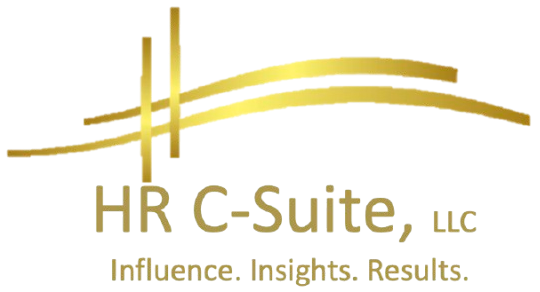When most leaders think of HR’s return on investment, they imagine direct, measurable metrics: cost per hire, turnover percentages, training completion rates. These numbers matter, but they tell only part of the story. The real ROI of HR isn’t captured in spreadsheets or quarterly reports—it’s the ripple effect: the cascading influence HR initiatives have across people, teams, and the organization as a whole.
HR may not always generate immediate, easily quantifiable results, but its impact radiates—shaping culture, influencing leadership decisions, boosting productivity, and creating environments where employees thrive. Understanding this ripple effect is critical for leaders who want to move HR from transactional to strategic.
The Misconception of Traditional ROI
Traditional ROI in HR often measures activity, not outcomes. For example:
- Calculating recruitment costs per hire
- Tracking compliance training completion rates
- Counting the number of policies implemented
While these are valid operational metrics, they miss the larger picture. HR’s true value isn’t in the number of forms processed or sessions conducted—it’s in the outcomes these actions enable: engaged teams, reduced burnout, more innovative ideas, and stronger organizational alignment.
Activity is visible and easy to track, but it doesn’t always drive meaningful results. The ripple effect, on the other hand, may start small—like a single development program—but spread across the organization in profound ways.
Understanding the Ripple Effect
The ripple effect refers to the indirect, multiplying impact of HR initiatives. When HR improves one area of the employee experience, the effects often expand beyond the initial target.
Consider these examples:
- Leadership development programs: Training a small group of managers in coaching skills doesn’t just improve those leaders’ performance; it enhances team morale, reduces turnover, and increases productivity for entire departments.
- Wellness initiatives: Implementing a mental health program may initially reach a handful of employees, but as participants share experiences and managers model healthy behaviors, the positive impact spreads throughout the organization.
- Cultural alignment programs: Defining and reinforcing organizational values influences not only employee behavior but decision-making at the leadership level, partnerships with clients, and brand reputation.
The ripple effect shows that HR’s ROI is often exponential, not linear. Small investments in people can generate wide-reaching organizational benefits.
Why HR Often Underestimates Its Impact
HR teams frequently underestimate their influence because the effects are less visible and slower to materialize. Many HR leaders are measured by short-term outputs, not long-term organizational outcomes.
- Delayed results: Initiatives like engagement programs or leadership development may take months or years to show measurable impact.
- Intangible benefits: Improved culture, trust, and morale are critical to organizational health but are hard to quantify in standard ROI calculations.
- Misalignment with finance: Traditional financial metrics often fail to capture the indirect value of HR’s work, making its contributions appear less impactful than they truly are.
The ripple effect challenges HR to shift the narrative: it’s not about what’s immediately measurable, but the broader, multiplying outcomes that HR enables.
Examples of Ripple Effect in Action
- Onboarding That Connects Employees to Purpose
A company redesigned its onboarding program to connect new hires to organizational mission and values. Initially, the measure was simply onboarding completion. Over time, ripple effects became clear:
- Employees understood their roles in a larger context.
- Engagement scores increased, reducing early turnover.
- Teams became more collaborative, leading to faster project completion.
- Customer satisfaction improved as employees demonstrated more initiative and ownership.
This small intervention had a compounding effect across multiple layers of the organization.
- Leadership Coaching Programs
A mid-sized organization invested in coaching for its top 20 managers. While initial ROI metrics focused on participation, the ripple effect included:
- Improved team engagement and performance
- Lower conflict and more constructive problem-solving
- Emergence of new leaders ready to take on greater responsibilities
Here, the initial investment created cascading benefits that far exceeded the original cost.
- Employee Recognition Initiatives
A simple recognition program encouraged managers to celebrate contributions publicly. Ripple effects included:
- Higher discretionary effort among employees
- Strengthened alignment with company values
- Improved retention, as employees felt valued and seen
Small HR actions can multiply in influence when intentionally designed.
How to Measure and Communicate the Ripple Effect
While traditional ROI is straightforward, the ripple effect requires a broader lens. HR leaders can consider:
- Leading indicators: Look for early signs of change, such as improved collaboration, reduced friction, or faster decision-making.
- Employee experience metrics: Surveys, pulse checks, and focus groups capture the impact of HR programs on morale, engagement, and purpose.
- Business outcomes: Track how HR initiatives influence retention, productivity, innovation, and revenue indirectly.
- Storytelling: Sometimes the ripple effect is best communicated through narrative—highlighting real examples of how HR initiatives improved experiences, outcomes, or culture.
By framing HR ROI through the lens of the ripple effect, leaders can demonstrate strategic value beyond immediate outputs.
Designing HR Programs With Ripple Effect in Mind
To maximize impact, HR initiatives should be intentional, strategic, and connected to organizational goals:
- Start with outcomes, not tasks: Define the desired ripple effect before designing the program. What behaviors, results, or cultural shifts should occur?
- Consider interdependencies: Understand how the program will influence teams, leadership, and organizational systems.
- Build for scalability: Programs that influence multiple layers or can be replicated amplify the ripple effect.
- Track and adjust: Use feedback loops to ensure the initiative is generating the desired effects and adapt as needed.
Designing with ripple effect in mind shifts HR from transactional execution to strategic influence.
The Leadership Advantage of Ripple-Focused HR
Leaders who understand and leverage the ripple effect gain a competitive advantage:
- Stronger culture: HR initiatives that resonate ripple through teams, reinforcing values and behaviors.
- Enhanced productivity: Small investments in people generate widespread improvements in engagement, collaboration, and innovation.
- Talent retention: Employees recognize when their growth, development, and well-being are prioritized, reducing turnover and preserving institutional knowledge.
- Organizational resilience: Ripple effects often strengthen adaptability, preparing teams to navigate disruption with agility.
The ripple effect turns HR from a cost center into a strategic multiplier—where impact far exceeds investment.
Wrapping It Up: Rethinking HR ROI
The real ROI of HR isn’t always apparent on a balance sheet. It isn’t just cost savings, metrics, or activity volume. It’s the ripple effect: the cascading influence HR has on engagement, culture, leadership, productivity, and organizational resilience.
To unlock this potential, HR leaders must:
- Focus on impact over activity
- Design programs with intentional ripple effects in mind
- Measure both leading indicators and long-term outcomes
- Communicate successes through stories, not just numbers
When HR is seen through the lens of ripple effect, it becomes clear: small, strategic interventions create exponential impact, strengthening organizations and empowering people in ways that traditional ROI metrics can’t fully capture.
HR’s true power lies not in what it does, but in the waves it sets in motion—ripples that extend far beyond the office walls, influencing teams, leaders, and the organization’s trajectory for years to come.

